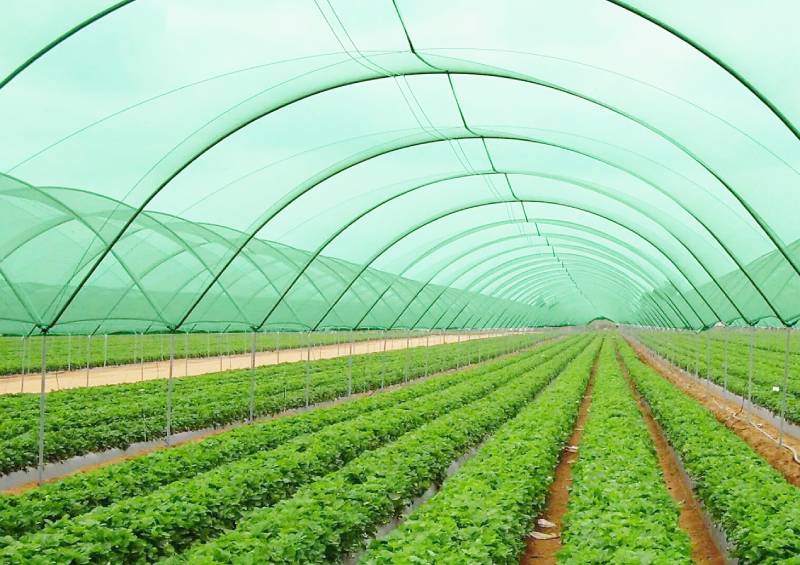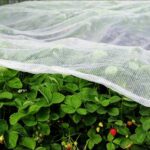The Utility Of Shade Nets In Agriculture, Construction And Other Sectors

As the world becomes increasingly focused on climate regulation and the efficient use of resources, shade nets have emerged as a critical tool across various fields. These versatile materials are indispensable in agriculture, construction and residential applications. In this guide, we will explore what shade nets are, their composition and functionality, their diverse applications and the numerous benefits they offer.
A shade net, a knitted fabric made from high-density polyethylene (HDPE), a material chosen for its durability, lightweight nature and resistance to environmental wear and tear. While shade nets were initially designed to protect against the sun’s harmful rays, their functionality extends far beyond sun protection. By filtering sunlight, shade nets can control the light intensity, temperature and humidity of the area beneath them, creating an optimal microenvironment for a wide range of applications.
One of the key factors in selecting a shade net is understanding the shade percentage, which refers to the amount of sunlight a net can filter. Different applications require different levels of shading.
For example, 90%-100% shade nets provide maximal shading, making them ideal for privacy screens, construction sites and environments where nearly complete sunlight blockage is necessary. In contrast, 30%-50% shade nets allow more sunlight to penetrate, making them suitable for plants that thrive in full sun, such as cacti and succulents.
The benefits of shade nets are numerous and diverse, contributing to their widespread use across many sectors. One of the most significant advantages of shade nets is their ability to control temperature. By blocking excess sunlight, shade nets can lower temperatures, which is crucial for protecting plants in hot climates and creating cooler environments for animals and humans. Additionally, shade nets provide UV protection by filtering harmful rays, thus protecting plants, animals and materials from sun damage, which can extend their lifespan and reduce health risks.
Shade nets also play a vital role in water conservation, particularly in arid regions. By reducing evaporation, shade nets help retain soil moisture, which supports sustainable farming practices. In terms of energy efficiency, shade nets reduce the need for external cooling systems by naturally lowering temperatures, which conserves energy and reduces costs. Furthermore, shade nets act as a physical barrier against pests, minimizing the need for chemical pesticides and supporting organic farming practices. They also offer protection against harsh weather conditions, such as wind, rain and hail, preventing damage to crops, materials and structures.
Due to their adaptability and effectiveness, shade nets are utilized in various industries. In agriculture and horticulture, they protect crops from excessive sunlight and pests while creating favourable growing conditions in nurseries and greenhouses. In livestock farming, shade nets provide shelter for animals, reducing heat stress and improving productivity in hot climates. In the construction industry, shade nets protect workers and materials from sunlight and provide safety by preventing debris from falling and reducing the impact of dust and wind. Shade nets are also used in residential settings to create shaded outdoor spaces, enhancing comfort in gardens, patios and parking areas. Additionally, in industrial applications, shade nets protect machinery and materials from sun damage and create shaded areas for outdoor work environments.
Shade nets have become essential tools in agriculture, construction and various other sectors due to their ability to provide protection against harsh environmental conditions, promote energy efficiency and support sustainable practices. As the world continues to grapple with the challenges of climate change and resource scarcity, materials like shade nets are invaluable for their versatility and practical utility. Understanding the different shade percentages and benefits of shade nets enables informed decision-making for various needs. Whether improving crop yields, safeguarding livestock, enhancing construction safety or creating shaded outdoor spaces, shade nets, such as those provided by YKM Fence, offer reliable and cost-effective solutions.
Shade nets represent a vital intersection of environmental sustainability, resource efficiency and practical utility. Their ability to create controlled environments while conserving energy and water makes them a crucial asset in today’s world. As we move towards greater climate regulation and resource management, the use of shade nets in supporting sustainable practices will continue to expand, proving their value across industries.














